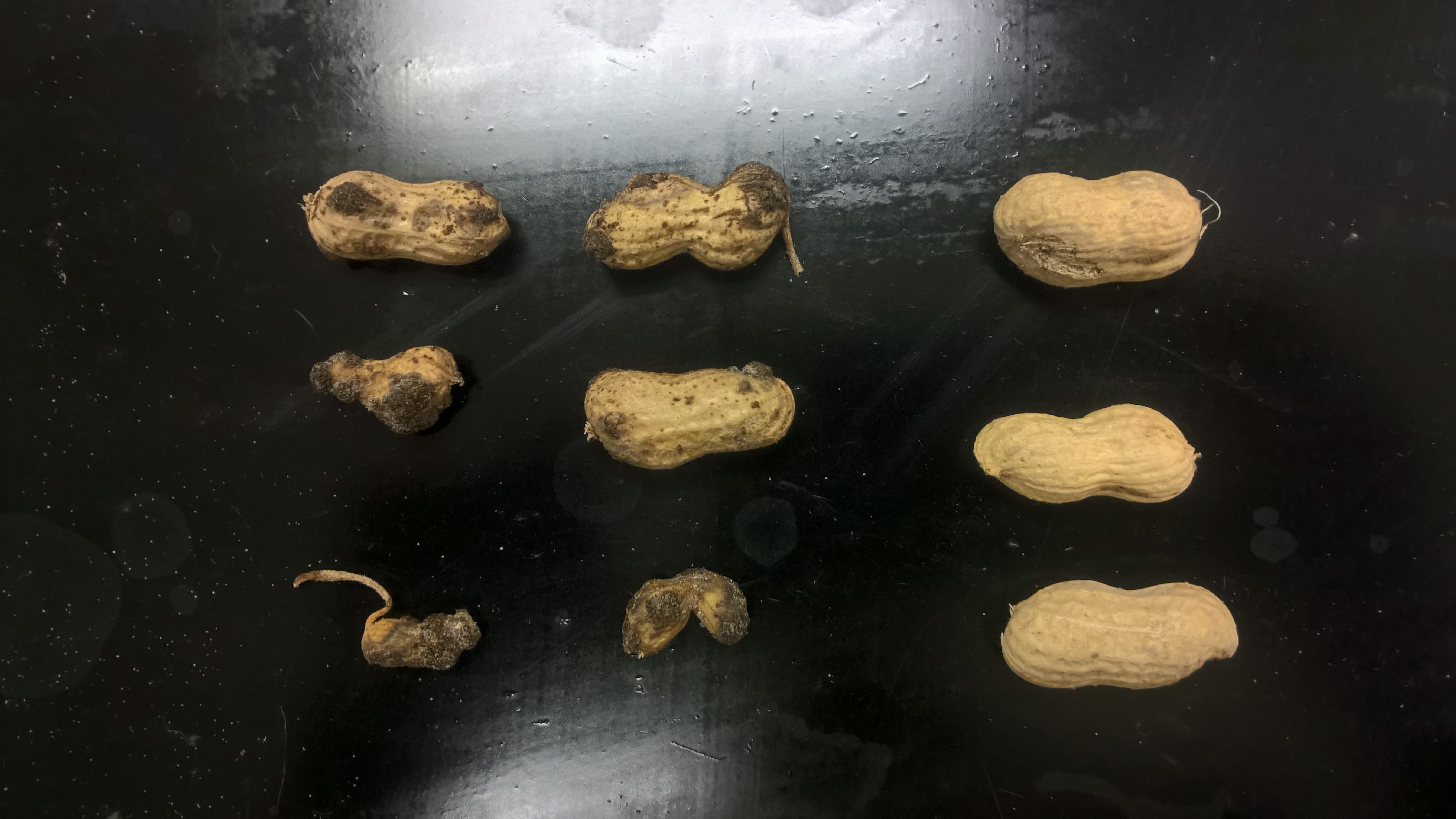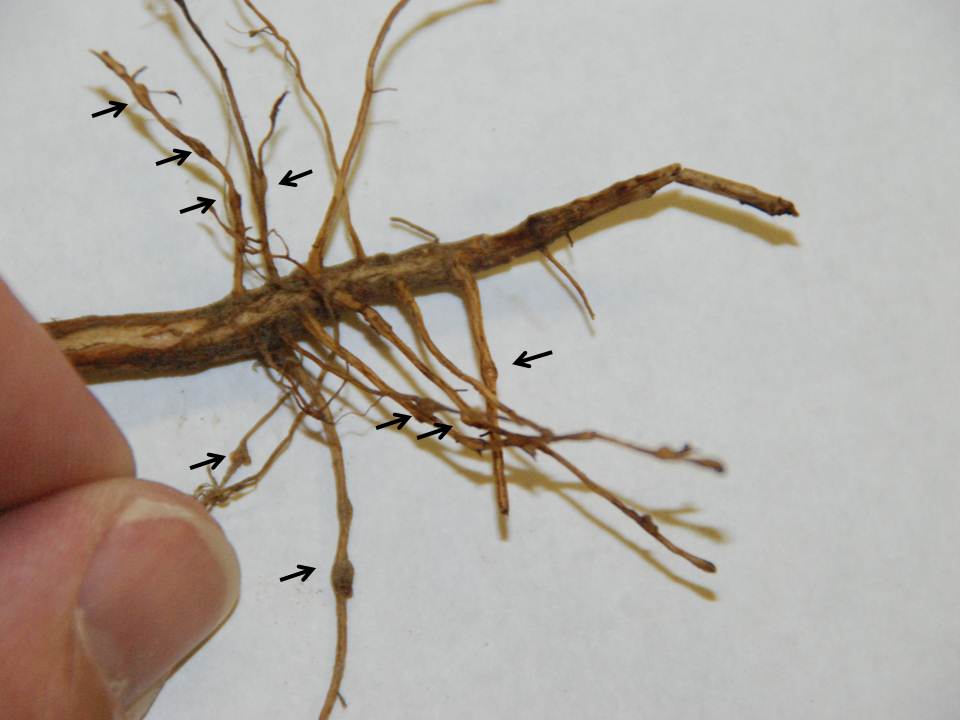Figure 2. Peanut roots with galls caused by root-knot nematode. Galls are difficult to distinguish on peanut roots because N-fixing nodules cover the roots. Galls are thickenings of the roots while nodules are round attachments to the side of the roots.

Figure 3. Peanut pods from Jackson County damaged by root-knot nematodes (left) compared to healthy pods (right).

Figure 4. Cotton roots with galls caused by root-knot nematodes marked by arrows. Photo by Tom Allen
Soil sampling is the primary method for nematode detection, since one or more stage of all plant-parasitic nematodes can be soil-borne. To collect samples for nematode analysis, collect soil samples to about 8 inches deep, from about 20 locations near plant roots in an area no larger than a few acres. Any tool that can dig a core or slice of soil to 8” can be used, but tools that yield a 4” or less diameter soil core are ideal (soil probe, trowel, soil auger, etc.). All soil samples collected from the area should be mixed well in a container to form a composite sample. At least a pint of soil is needed, and if a large amount of soil is collected, a portion of the well-mixed sample can be submitted. If a certain area of the field has symptoms of nematode damage, it is useful to take a composite sample from only this area. A separate composite sample from an area where the crop looks healthy can then be taken for comparison. To sample for nematodes in an area larger than a few acres, divide the area in smaller portions and take multiple sets of separate samples. After collection, samples should be kept around room temperature or cooler and not allowed to dry out. A closed, clearly labelled plastic bag is an ideal storage container. Submit samples to a reputable nematode-testing lab such as the University of Florida nematode assay lab.
Because some nematodes fully enter roots when infecting plants, collecting and submitting plant roots for analysis can also be useful for diagnosis of a problem in a current crop. In particular, if root-knot nematode infection is suspected and diagnosis of the species present is desired, root samples should be submitted as well. To collect samples, dig plants suspected of nematode infection and keep the root system intact as much as possible. It may be useful to submit nearby healthy plants as a comparison. For assistance with sampling for nematodes in agronomic crops or more information, contact your local extension agent.
Source:ufl.edu